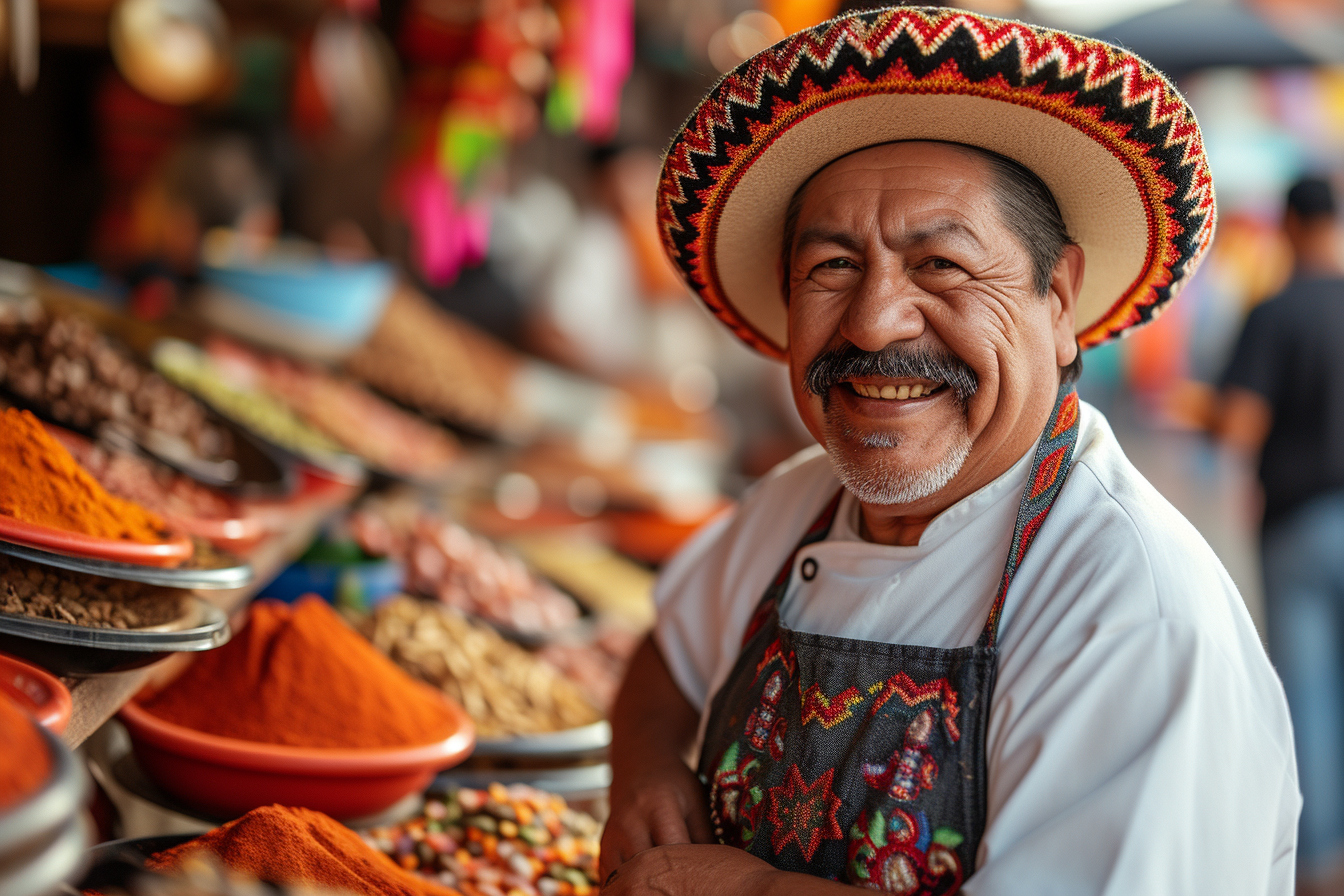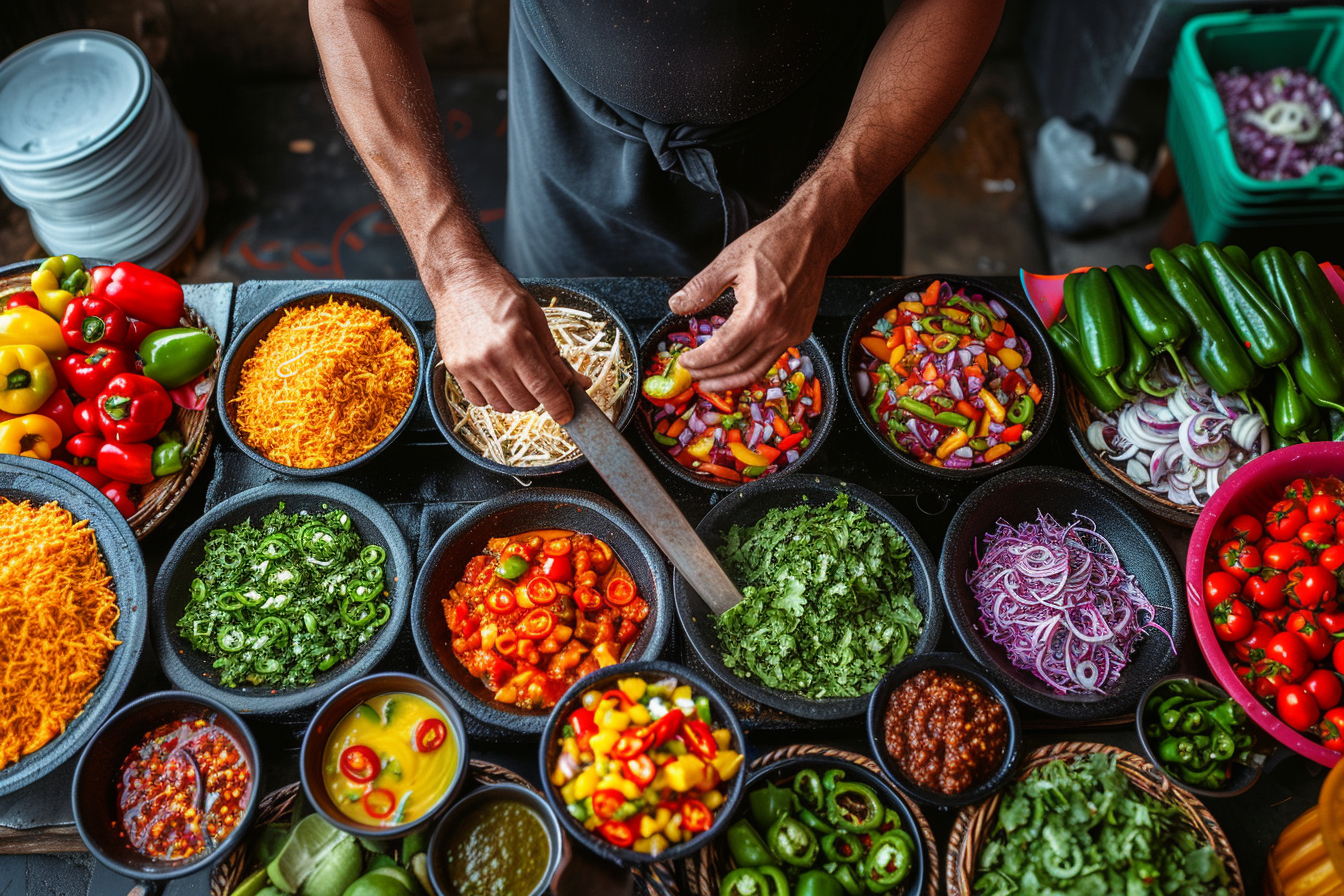Mexican cuisine is a vibrant and colorful tapestry woven from a variety of indigenous and European influences. The culinary traditions of Mexico are as diverse as the country’s geography, ranging from the desert landscapes of the north to the tropical coasts in the south. What binds these various regional cooking styles together is a dedication to robust flavors, fresh ingredients, and deep-rooted cultural significance.
The roots of mexican cuisine

The culinary history of Mexico is one of rich complexity. Before the Spanish conquest, ancient civilizations such as the Aztecs and Mayans thrived, cultivating crops that remain staples in the Mexican kitchen today. Corn, beans, chilies, tomatoes, and chocolate form the bedrock of the country’s cooking. With the arrival of the Spanish, new ingredients like rice, beef, pork, dairy products, and various spices were introduced, which led to an explosion of new flavors and dishes.
Pre-Hispanic influences
Corn, the cornerstone of Mexican cuisine, is celebrated for its versatility and nutritional value. Techniques like nixtamalization, where corn is soaked and cooked in an alkaline solution, not only enhanced the flavor but also improved its health benefits, allowing for the creation of masa, a dough used for making tortillas, tamales, and other foundational foods.
European integration
The Spanish influence brought about a culinary revolution, with the introduction of livestock, dairy, and rice, which Mexican cuisine absorbed and reinterpreted. The fusion of these elements created iconic dishes such as carnitas (slow-cooked pork) and arroz con leche (rice pudding).
Regional culinary landscapes
In Mexico, geography dictates the palate. The northern region, with its vast ranches, is known for hearty grilled meats, particularly beef. The coastal areas, meanwhile, offer a bountiful array of seafood, seasoned with local herbs and served with tropical fruits.
The heartland and bajío
In the central highlands and the Bajío, a region that stretches from the heart of the country towards the Pacific Coast, traditional cookery showcases complex sauces, rich stews, and sweet confections. Mole poblano, perhaps Mexico’s most celebrated sauce, rises from these lands, combining chili peppers, spices, and chocolate into an exquisite blend that tantalizes the taste buds.
The spice of the south
Moving to the southern states like Oaxaca and Yucatan, the culinary canvas becomes increasingly vivid. Here, indigenous practices shine through dishes like cochinita pibil, a slow-roasted pork marinated in achiote and sour orange, and Oaxacan cheese which is similar to a string cheese but with a distinctly Mexican twist.
A medley of flavors
Simplicity and depth coexist in Mexican cuisine. To truly appreciate the nuances of this culinary art form, one must understand the components that thread through the vibrant mosaic of flavors.
Chili peppers: the soul of mexican cooking
The seemingly endless variety of chili peppers is not just about heat; each type offers a different balance of heat, sweetness, and smoky nuances. From the milder poblano to the fiery habanero, chilies are not just about the spice; they contribute a complexity to dishes that is unparalleled.
Corn: more than just a crop
Corn, as previously mentioned, is indispensable. Beyond tortillas, this grain appears in countless forms: fresh in salads or soups, as hominy in pozole, or as the soft dough in tamales and atole (a traditional corn-based beverage).
Tomatoes and tomatillos: understated essentials
Tomatoes and their relatives, the tomatillos, provide the acid and sweetness that balance the heat in salsas and stews. Fresh or roasted, they form part of the holy trinity of Mexican salsas, alongside chilies and onions.
Culinary practices: time-honored and evolving
Tradition is sacred in Mexican cookery, yet there is an openness to adaptation and evolution. The "mole de olla" one might enjoy in a family home does not boast a single recipe but many, each carefully adapted over generations.
Street food: a glimpse into the heart of mexico
Perhaps nowhere are the vibrancy and accessibility of Mexican cuisine more evident than in the bustling street markets and roadside stands. Here, quick bites like tacos, quesadillas, and tlayudas offer a taste of the country’s convivial spirit and culinary diversity.
Festivities and food
Each celebration in Mexico comes with its designated cuisine. Dia de Muertos (Day of the Dead) showcases sugar skulls and pan de muerto. Christmas would not be the same without buñuelos and tamales. Food not only accompanies celebrations but is often the centerpiece.
Modern gastronomy and the global stage
As the world becomes increasingly interconnected, Mexican cuisine continues to garner international acclaim. Chefs within Mexico and abroad are reimagining traditional dishes, presenting them with contemporary twists while retaining the core flavors that define them.
Fusion and innovation
Innovative chefs are creating fusion dishes, combining Mexican flavors with global cuisines in experimental ways. The dynamic gastronomic scene in Mexico City and beyond represents a modern Mexico, while never losing sight of the ancestral traditions.
Sustainability and local sourcing
There is a growing trend in Mexico to return to ancient agricultural techniques and local sourcing, emphasizing sustainability and the importance of ‘tierra a la mesa,’ or ‘farm to table’. This resurgence of interest in indigenous ingredients and methods champions both the environment and the rich agricultural heritage of Mexico.
Final morsels of thought
Mexican cuisine is something deeply woven into the fabric of what it means to be Mexican. It is an expression of history, regional diversity, and cultural pride. From sizzling street food to sophisticated haute cuisine, it consistently delights and surprises the palate. Whether dining in an upscale restaurant in Mexico City, a beachfront eatery in Cancún, or a humble village abuela’s home, the experience of Mexican food is one of connection—connection to the land, to tradition, and to the people who cherish and enliven it.
Engaging with Mexican culinary traditions goes far beyond enjoying delicious foods; it’s an immersive cultural journey. As a food lover or curious traveler, diving deep into the richness of Mexico’s flavors can be as enlightening as any other form of cultural exploration. The country’s gastronomy is a story told one plate at a time, a narrative steeped in tradition, innovation, and pure, uninhibited flavor.


